
MAY CONTAIN NUTS

Search Shorpy
SHORPY ART

Framed or unframed, desk size to sofa size, printed by us in Arizona and Alabama since 2007. Explore now.
Join and Share
Ad-Free Shorpy
Shorpy is funded by you. Patreon contributors get an ad-free experience.
Learn more.

Recent comments
- Wowzers
- Treescaping
- Still Life With Operator
- +112
- Rear View
- Way in the back --
- Button It Up
- And with an eye on the time ...
- Working in an enclosed ashtray
- Rear View Mirror?
- Tobacco cam
- Basic fact I learned only later in life
- Put a Lid on it!
- Pinstripes in the Tower
- Sound enhancement
- 3438 in '38
- Second Career
- Their days are numbered
- Only the Sensor
- Train control mechanism
- Rarest of the Rare?? & Classy 3400 Class
- Control Mechanism
- Those standpipes
- Wrenches
- International D-40 I believe
- Job prospects
- You had me at Train
- Land of the free
- Broad-Exchange Bldg
- Parking innovation
Member Photos
The Shorpy
Printporium
Printporium
Search Shorpy
Search results -- 30 results per page
- Soccer Mom: 1908
- ... on the lights in order to make the number visible at night. Several states required this on either the side lights or the ... Posted by Dave - 07/17/2012 - 10:20pm -
![Soccer Mom: 1908 Washington, D.C., circa 1908. "Mrs. F.S. Bliven in auto." Husband Frank, who worked for Cook & Stoddard, the local Franklin automobile agency, made the newspapers for driving 35 miles with a broken steering knuckle. View full size.
That broken knuckleDoes it say which hand?
Chitty Chitty Bang BangI know it's not that car, but it has a lot of the same stylish features. The round radiator grille is a work of art.
Gray's Anatomy & Collison RepairArduous research reveals that "steering knuckle" refers to an auto part, not a body part.
[Not to mention auto body part. - Dave]
Four Valves Per tire?Beautiful shot. You can even read the tire information on the sidewalls, BF Goodrich 32 by 3½ clinchers. Are there any tire experts who can explain what look like four valves on each tire? For such a beautiful car, the tires are in dreadful shape. Lots of gouges in the front tire and badly worn tread in the rear.
[Those are rim clamps. - Dave]
Model DriverIt seems there's no way to know if the lovely, but definitely annoyed looking Mrs. Bliven had actually learned to drive yet. She's certainly not dressed for it. Even on fair days in 1908, almost all ladies in cars wore long dusters to protect their clothes and firmly pinned hats, veils to secure their hair and to prevent sun and wind burn, and goggles to avoid being blinded by airborne debris. It looks as if she and her daughter have stepped straight from their verandah to pose for this photo, and once it was taken made a quick retreat back to the shade.
Look Ma, no radiator !Franklins had air-cooled motors.
Mrs. BlivenMrs. Bliven looks like the stereotypical woman in the movies who turns out to be gorgeous once she takes off her glasses and lets down her hair. And her daughter looks like she's going to be a heap of trouble in a few years.
1907 Franklin Model DThis fine auto is a 1907 Franklin Model D roadster. It has two seats, a folding top for inclement weather, but no windshield. Note the Phare Solar acetylene headlamps, among the first to have prefocused lenses. Also note the large sidelights, brass emergency brake and shifting levers on the side, and the brass bulb horn. The grille shows the six-blade fan for the air-cooled four-cylinder motor. Note the early leather license plate, and of course the crank to start the motor. Often in this era tires were made without a tread, so they are not really bald.
Mr. Bliven's Big Adventure
Automobile Gossip
Washington drivers are taking off their caps to Frank Bliven, of the Cook & Stoddard Co., Franklin agents, for the nerve he displayed in driving a Franklin car from Darnestown, Md., to Washington, a distance of thirty-five miles, with a broken steering knuckle. On eleven different occasions during this run one of the passengers had to hold a tin cup over the hub of the wheel in order that Bliven might be able to steer the machine.
Washington Post, Jun 14, 1908
758I think the license plate reads 758. That must be the number (painted on the fenders?) which can be seen reflected in both the sidelight's lenses. I'm wondering why the tires have 5 valves instead on just one.
["758" is painted on the lenses of the sidelights. If it was a reflection, it would be backward. The tires each have one valve stem and four rim clamps. - Dave]
License Plate LightsThe license plate number was painted on the lights in order to make the number visible at night. Several states required this on either the side lights or the headlights. Pictures of cars with their lights painted with the license plate number are not very common.
(The Gallery, Cars, Trucks, Buses, D.C., Harris + Ewing, Kids)](https://www.shorpy.com/files/images/15004a.thumbnail.jpg)
- And Now a Word From Our Sponsor: 1911
- ... by the sheer force of his business acumen.
A night scene of this section of the boardwalk at Shave Yourself: 1910 where ... those large signs built on frameworks were all lit up at night.
See Shredded Wheat Made Now THAT'S entertainment!
... Posted by Dave - 10/18/2012 - 8:36am -
![And Now a Word From Our Sponsor: 1911 Atlantic City circa 1911. "Bathing in front of the Traymore." As well as giant billboards advertising various products both funct and defunct. 8x10 inch dry plate glass negative, Detroit Publishing Company. View full size.
Kondo & Co.Kondo & Co. Importers of General Japanese Goods. Stores:
No. 6 West 33rd St., N. Y. City.
218 Oliver Ave., Pittsburgh, Pa.
1031 Boardwalk, Atlantic City.
1543-45 Boardwalk, Atlantic City.
The Oriental Economic Review, November 10, 1910.
Kondo & Co., who own one of the most prosperous shops in Atlantic City, was founded by Sajuro Kondo, who came to Atlantic City in 1896 from Boston, Mass., as a representative of Yamanaka, Amano & Co. He opened a shop of his own in 1900, beginning with a capital of only $1,600, and has achieved his present very positive success by the sheer force of his business acumen.
A night scene of this section of the boardwalk at Shave Yourself: 1910 where the signage at 1543-45 Boardwalk is "The Tokio." I can't figure out which of these photos came first.
Vaniman's airshipGood contemporary summary of the Vaniman Akron disaster here. More recent word is that the exhaust valves meant to decrease chances of explosion of hydrogen airships may have contributed to the disaster 15 min into its transatlantic flight 1000-2000ft aloft, killing 5 people.
"See Shredded Wheat made"Well, that's the height of Edwardian excitement, I guess; a far cry from the entertainment offered in Atlantic City these days. I bet those large signs built on frameworks were all lit up at night.
See Shredded Wheat MadeNow THAT'S entertainment!
Vaniman's AirshipThe sign advertising "The Wreck of Vaniman's Airship" dates the photo to after July 2, 1912.
Shredded Wheat Fans Unite!I am the only creature in my house that buys and eats shredded wheat. Those biscuits must be properly splattered with milk or they'll go soggy on you. It takes years to perfect the perfect technique but the effort is well worth it. I would give anything to see it made up close and personal. Oh, the Bucket List just keeps growing!
The bride of 40 years, the kids and the grandkids think I'm nuts but what do they know?
Must askWhy is the Gillette sign facing one way in the daytime photo and the other way in the nighttime photo brought to our attention by stanton_square? Has the sign been moved?
[It's also facing the other direction in this one. - tterrace]
Smoke 'Em If You Got 'EmHelmar is Ramleh spelled backwards. Ramleh or Ramla, is a city founded in the Eighth Century. Egyptian cigarettes were deemed more exotic than other Tailor Mades (as opposed to rolling your own). Attached is a WW1 Era ad flacking the smokes to be sent to our boys in uniform. Cigarette advertisements, highlighting Service Men and Women, were also popular during WW2. The Army 'K' Rations (meals ready to eat) contained a four pack of popular brand smokes.
Million Dollar PierIn the background is John Young's Million Dollar Pier, seen here, here, here and perhaps best of all here.
(The Gallery, Atlantic City, DPC, Swimming)](https://www.shorpy.com/files/images/SHORPY_4a25625a.thumbnail.jpg)
- Magic Moment: 1960
- ... Not quite a year later and I still go back there every night for a visit just before I drift off to sleep. A wonderful photo ... Posted by tterrace - 07/02/2009 - 4:52pm -
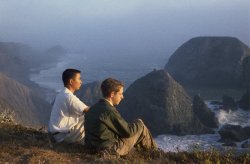
- The Tuller: 1914
- ... feed the workers there. Here is a picture of a similar "night lunch" wagon on the streets of Detroit, sporting the name of a locally ... Posted by Dave - 08/09/2012 - 10:39pm -
![The Tuller: 1914 Detroit, Michigan, circa 1914. "Hotel Tuller, Grand Circus Park." 8x10 inch dry plate glass negative, Detroit Publishing Company. View full size.
"Half-ironed pants"More on the Tuller from Forgotten Detroit.
[Also has its own Wikipedia entry. - Dave]
The Ol' Lunch WagonThese antecedents of modern-day diners and catering trucks were common features on the streets of large cities at this time, and were often left at construction sites or in places where lots of people were working late shifts in order to quickly feed the workers there. Here is a picture of a similar "night lunch" wagon on the streets of Detroit, sporting the name of a locally famous hotel that may be familiar to regular Shorpy followers.
Re: Quick LunchSure looks like a diner. Those steps look treacherous. They also look like they could be mass produced.
Right across the street.Is that the corner of a diner on the right? I'd like to see pictures of that.
Windows without glass?In the first level beneath what might be a penthouse, there appear to be several windows without glass or sashes. Also, is that a church next door?
[The side-hinged casements open in. On the left is the Universalist Church of Our Father. - Dave]
AfterthoughtThat top floor looks like they added it after the building was completed.You can't say they didn't get full use of their site! Every square inch is occupied!
[The top floors were added in 1914. - Dave]
Here in DetroitTwo 1914 period Detroit Electrics, identified by their stylish curved front corner windows, at home in their city. Is the intriguing "Qui..." on the right some kind of circus wagon?
["Quick Lunch." Grand Circus means "big circle," which was the shape of the park.- Dave]
ElectricLooks like two Baker Electrics in this picture. If I am wrong I am sure there will be an immediate correction. Go for a ride in one with Jay Leno.
(The Gallery, Cars, Trucks, Buses, Detroit Photos, DPC)](https://www.shorpy.com/files/images/4a25483a.thumbnail.jpg)
- Downsized: 1977
- ... effect.
Apply Yourself First off - another rizzman night-shot with those Adams tones and depth -- the ordinary is made evocative, ... garage in Toronto and drove a different taxi every night. When I came to work, all I really wanted was one of those Chevies.
... Posted by rizzman1953 - 05/28/2012 - 3:57pm -
![Downsized: 1977 New Chevrolet meets Old Cadillac circa 1977 in Medford, Mass., on the corner of Mystic Avenue and Harvard Street at a service station whose name escapes me. Not the best time for American cars! View full size.
35 years gone byThe station is still there, selling "7"? gasoline. Curiously there seems to be a payphone remaining where the booth once stood. The house on the right in the photo, remains.
CostNot only did GM downsize their cars that year they also cut the profit margins to the dealers from 22% to 15%. This resulted in a lot of problems for both regular customers and dealers who were used to getting and giving anywhere from 18 to 20% discounts. GM also advertised at the same time that they had no price increases when in reality they raised the price by 7% to the dealer. This allowed the manufacturer to look good to the public and made the dealers to look like liars. We had a joke about manufactures representatives at that time. It was how can you tell if a rep is lying. His lips are moving.
I think that was a 1968 land yachtMy father had a '68 Cadillac at the time I started driving. It was massive, and it was a beige shade that had you refraining from the use of "pink", but just barely. I believe it was a 492 cubic inch V-8 which ran on leaded premium and returned upwards of 9 MPG. What a beast!
[Taillight housing shows it to be a 1967. - tterrace]
More NoirIt looks like a crime is about to go down, the lit Phone Booth only enhances that effect.
Apply YourselfFirst off - another rizzman night-shot with those Adams tones and depth -- the ordinary is made evocative, and I just drool over the way you have managed and realized this series of photos. Kudos!
Secondarily - looks like there was a bit of a QC problem with whoever produced and applied the Chevy ad: the sections of the paper don't seem to quite match up.
Wonder if anyone noticed? Other than the paper-hangers, that is.
Whatta great photo!
A move in the right directionI was in my 20's at the time and HATED that New Chevrolet. In retrospect, this was the best thing to happen to American cars. In a year or so I would get a 1978 model.
Beginning of the endWhile the '77 GM full-size models represented a sea change from the behemoths of '76, it was a major step in killing whatever brand identity remained across the makes. This was the year they started putting Chevy engines in Oldses, Buick engines in Pontiacs--ironically only Chevy continued on using its very own small block V-8s and sixes. This body was recycled endlessly until about 1991 until it became useful only as a taxi or police car. If the end of the 70's was bad, the 80's would only get worse with endless reorganizations and no real direction for the company.
The lights are on, but nobody's homeI'm curious as to why the lights are on inside the phone booth. I thought they only came on when someone went inside and completely shut the door.
[The Bell System Airlight booths, introduced 1954, were illuminated 24/7. - tterrace]
I didn't realize that, and have never personally seen one that's lit all the time. Thanks for the update! I also love those print ads for them. I wonder though, if little Fido opted to leave a "present" just outside the door for the next caller. - Uncle George
FantasticA beautiful photo. Just had to remark on it as this so captures the times in more ways than one. What a shot.
1977 ChevroletWhoo - I never liked those cars, but the later years of the same body style (can you imagine the same basic body style lasting about 13-14 years today?) were vastly improved with the automatic transmission with overdrive. They were very solid cars and you still see them on the road fairly often. Interestingly enough, the 1977 GM intermediate cars (Malibu, etc.) were just as large as the full size cars for that one year (the intermediates were redesigned in 1978).
Keep 'Em Coming, RizzmanI love seeing your photos. So much to see here. The North American Van Lines and 7Up trailers. Can't make up my mind which Chevy steals the show though.
In with the New...I wish I could put my finger on what makes this series of pictures so fascinating, but whatever it is--keep 'em coming! They are terrific.
I owned an '81 Caprice, but mine was a 4-door. Good thing gas was still relatively cheap back then. Even with a V-6, it was a guzzler!
I wonder how many kids today have never even seen a phone booth.
10 years oldIf I'm not mistaken, the Caddy looks like a 1967 Sedan de Ville. Looks a little rough for its age.
History Lover is RightThat '67 DeVille *does* look quite rough for its age. I've had a '65 forever, never babying it. It doesn't fit in the garage so a herd of Jaguars live there. So the Cadillac has sat outside for all its 46 years. In spite of that, I've none of the rust visible on the one in our photo. And I've never hit or been hit (in any car), so my doors still match the body color. These old mid-60s Cadillacs were built to last forever. If they don't they were abused and neglected. (That said, this example, while ugly, may well still be providing reliable service.)
TaxiI drove a lot of third-generation Caprices and sixth-generation Impalas as taxis during the eighties (never could tell the difference between 'em). They easily outdrove and outclassed all the beater Fords and Chryslers: peppier, smoother ride, and most important of all, you could pull a U-turn within four lanes, a huge advantage for a cabby on an average downtown street. I worked at a nasty multi-car garage in Toronto and drove a different taxi every night. When I came to work, all I really wanted was one of those Chevies.
This was the oneI have been watching this site now for about a month and am fascinated with it. After seeing this photo I had to sign up for a login. Rizzman, your photos of New England might as well been projections of my own memories. I went to school in Warwick RI and spent a lot of time in the greater Boston area with friends on the weekends. Seeing this photo reminds me of the 1985 Buick LeSabre coupe i was driving at the time. It looked identical to the '77 Caprice Aerocoupe in this picture. It also got the same gas mileage too! Seeing this image really reminded me of all those good times growing up in New England. Thanks again!
(ShorpyBlog, Member Gallery)](https://www.shorpy.com/files/images/THENEWCHEVY.thumbnail.jpg)
- Motown: 1915
- ... roof, where flags during the day and oil lanterns by night signaled storm conditions on the Great Lakes." On days when the Tigers ... Posted by Dave - 08/13/2012 - 8:20pm -
![Motown: 1915 The Motor City circa 1915. "Campus Martius, Detroit." With the Dime Savings Bank rising behind City Hall. Detroit Publishing glass negative. View full size.
VertigoDig the window-washer on the Dime building opposite the top of the clock tower. Also that fire escape running up the side looks terrifying!
Don't worry, tired horsiesDetroit City has a plan to get you some rest. No more work hauling freight in the city for you!
Right Hand DriveAren't all three of the cars near the lower-right of the picture right-hand drive? That seems odd at such a late date.
[Many, if not most, motor vehicles in the United States in 1913 used right-hand drive. Ford, an early LHD adopter, made the switch in 1908 with the Model T. - Dave]
Old City Hall, RIPCity Hall lived to the ripe old age of 90, at which time it seemed to be generally regarded as something of a money pit, firetrap and eyesore. Although it did have its partisans -- there's an entertaining account here of competing efforts to save it and tear it down over the years.
Finally razed in August 1961, City Hall was replaced by Kennedy Square Park, current site of 1 Kennedy Square.
Dime buildingThe Dime Building may be the shorter one to the left of city hall.
[The tall building is the 23-story Dime Savings Bank. Now called the Dime Building. The old Dime bank is the shorter building. Below, a current view showing the Dime Building upper right. Campus Martius is in the traffic circle with Woodward Avenue running from top left to bottom right. - Dave]
Getting to Know YouOld photos never cease to intrigue me, and bring on a number of emotions. All those people, now long gone, captured for one instant. And in cases like this, never even knowing their pic had been taken, let alone imagining that 100 years later other people would be looking at it via undreamed of technology.
The strange flagThe building just left of City Hall - the Hammond Building - is flying a large and unusual flag. Part of the explanation appears on the Hammond Building's page on buildingsofdetroit.com: "Captains of freighters headed up the Detroit River would look to the Hammond’s roof, where flags during the day and oil lanterns by night signaled storm conditions on the Great Lakes." On days when the Tigers were playing, a white flag with a blue circle flew. But I can't identify a weather flag that includes a circle. Solutions?
Penobscot Building The short building to the left behind the City Hall is the original 13-story 1903 Penobscot Building.
There were two later additions: 22-story and 47-story. In the current view, you can see the base of the 47-story tower adjacent to the Dime Bank Building.
Missing Building?Love this shot, but found the "original" at the LOC's American Memory site and found an extra building in the background just right of center. Also, the rest of the right side of the images appear identical, but the left sides are not. The two men walking near the street lamp on the lower left of the Shorpy view do not appear below in the LOC shot.
[Viewed full-size, it's clear the "missing building" is a painting. Undoubtedly a case of creative re-use of an older photo for an up-to-date postcard. At that size, and colored, it wouldn't be obvious. - tterrace]
(The Gallery, Cars, Trucks, Buses, Detroit Photos, DPC, Streetcars)](https://www.shorpy.com/files/images/4a10541a.thumbnail.jpg)
- Kodak Noir: 1965
- 1965. "New York World's Fair -- Kodak Pavilion at night." Medium format color transparency, photographer unknown. View full ... color transparencies in direct sunlight as well as at night. How they did that .
No accident The person who took that photo ... Posted by Dave - 07/20/2015 - 3:27pm -
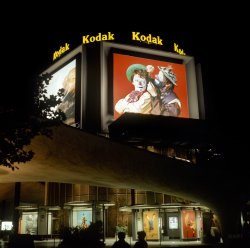
- Cafe Kelly: 1936
- ...
Do Drop Dead Was that Saturday Special, or Saturday Night Special?
I'd love to know more about the history of this building.
... Posted by Dave - 06/09/2010 - 10:48am -
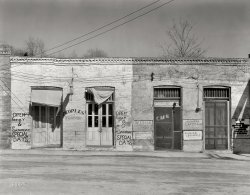
- Cafe Society: 1941
- ... and the girls dressed as if they were going to opening night at the opera. In retrospect it seems rather imbalanced. If the internet ... Posted by Dave - 11/29/2012 - 9:19pm -
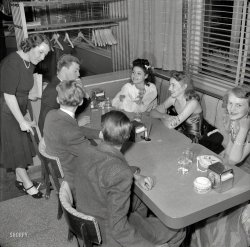
- Fight Therapy
- ... his wares to the boys at Walter Reed Hospital tomorrow night. He will box in a series of bouts to be held under the auspices of the ... opening of a new gymnasium at Walter Reed Hospital last night. And the convalescents there put the stamp of approval on the sport in ... Posted by Dave - 09/11/2011 - 4:32pm -
![Fight Therapy Circa 1919, "Boxing at Walter Reed Hospital." With some connection to the Knights of Columbus. View full size. National Photo Company glass negative.
TherapyDiscarded crutches at the ringside... bandages thrown carelessly aside... in a hospital already!... is there a doctor in the house?
Yikes!Whoa, whoa, whoa! The tighty whities go UNDER the shorts, man!! I wonder if this was the frightening sight that lead to the invention of Boxer briefs???
If they are well enough to box...The first thing I thought was, if these guys were not injured enough, they come to Walter Reed and box and hope for at least a broken hand?
Then I realized if they are well enough to box, even emotionally enough to deal with that level of violence...shouldn't they go home?
[The boxers are not sick, or injured, or patients at Walter Reed. This is entertainment for the patients. - Dave]
TightI like the two guys sharing the chair in the front row right... best friends!
K of C connectionSupport for our troops during the Great War (World War One) included "moving-picture shows, boxing contests, continuation schools, canteens where women workers served American-made dishes—these were some of the activities following the men. The Y. M. C. A. and Knights of Columbus bore the largest share of this work. More than $300,000,000 was contributed by the people of America to the maintenance of these activities."
Other groups that provided similar support included the American Red Cross, Y. W. C. A., Jewish Welfare Association, Salvation Army and the American Library Association.
[source]
My grandfather was in the US Army 85th Division detachment that fought the Bolsheviks in North Russia from Sept. 1918 through June 1919 (the American North Russia Expeditionary Force, a.k.a. "Polar Bears"). He wrote home on stationery imprinted with "Knights of Columbus - On Active Service with the American Expeditionary Force" and also "Army YMCA, North Russia".
Weekly Bouts Receive Stamp of Approval Washington Post, Jan 28, 1919
Five Bouts for Soldiers under Auspices of K. of C.
Pat Moore, the little Memphis bantamweight, who defeated Jimmy Wilde, king of the little boxers in England, in a recent allied boxing tournament in London, will show his wares to the boys at Walter Reed Hospital tomorrow night. He will box in a series of bouts to be held under the auspices of the Knights of Columbus.
...
The K. of C. will direct a series of weekly bouts from now on at Walter Reed. The boys there are enthusiastic over the sport.
Washington Post, Mar 2, 1919
Dempsey Headliner on Boxing Program
at Walter Reed Gym
A boxing program of a dozen bouts featured the opening of a new gymnasium at Walter Reed Hospital last night. And the convalescents there put the stamp of approval on the sport in no uncertain manner. They saw Jack Dempsey, who will fight Jess Willard for the world's championship next July, and they let him know they hope he will be champion when they see him again. Dempsey boxed three rounds with this sparring partner, Terry Keller, and of course he looked a champion all over under such circumstances.
...
Boxing fansAs expected, a mostly male audience. But I was surprised at how many women there are (and at least one child -- a little boy near the right margin).
(The Gallery, D.C., Medicine, Natl Photo, Sports)](https://www.shorpy.com/files/images/33399u.thumbnail.jpg)
- The E-Team: 1960
- ... (Alabama) at Columbus. It looks to have been a good night for the Tigers. 4x5 acetate negative from the Shorpy News Photo Archive. ... Posted by Dave - 05/08/2022 - 6:28pm -
![The E-Team: 1960 Columbus, Georgia, circa 1960. Eufaula (Alabama) at Columbus. It looks to have been a good night for the Tigers. 4x5 acetate negative from the Shorpy News Photo Archive. View full size.
Movin' on upWe all know the theory that the lengths of women's dresses follow (or lead) the stock market. What might be the significance of basketball shorts? (The 1960 U.S. recession officially ended in November, when basketball season began.)
Why So Serious?A good question as they are holding a trophy. Shouldn't they be smiling?
Maybe they are smiling inside.
Jocks"Boys, get on out there and play a good game! And don't forget to hold on to them balls."
Where's Gene?This shot, with the Chuck Taylors, droopy socks and some skinned knees, makes me want to watch "Hoosiers" for the umpteenth time.
Out of syncIt seems none of the jacket numbers correspond to the jersey numbers.
It's all relativeIn 1960 Eufaula, Alabama had a population of 8,357. If these were playoff games being held in Columbus, Georgia, the Tigers may be holding only (I say only) a third-place trophy. You tend not to smile when you go expecting first and end up getting third.
The random player stances caused me to see art. Click to embiggen if you feel the need. And then please answer the question: at right there is a shoe where you see only the laces, no leg. To whom does that shoe belong?
21 shoes, 10 players.am I right?
[There are 11 heads visible above 22 shoes that we can see, plus one leg whose sock is visible but whose shoe is not, bringing the total to at least 23 shoes. So there must be one hidden head and two hidden shoes for a total of 12 boys and 24 Chucks. Or, 11 guys and their 22 shoes plus one stray, unoccupied shoe. - Dave]
Look at all the Chucks!It's unanimous. Converse Chuck Taylors were the choice of this team. When I was a kid, they were the best basketball shoe and they cost $6. I still got a worn pair in my closet. I bought them in the '90s, forget what they cost, but the original dark blue color has faded to a nice sky-blue. Time to follow through and go online to buy my next pair -- I'm hoping to get the maroon color. It's spring and time to update the wardrobe a bit.
My guess is that it may be an invitational tournamentbut not a state playoff. Eufaula and Columbus are close, but in different states. I believe Eufaula is known for some pretty good basketball teams and players that made their way to Auburn.
[Bracket below! - Dave]
(The Gallery, Columbus, Ga., News Photo Archive, Sports)](https://www.shorpy.com/files/images/SHORPY-1496A.thumbnail.jpg)
- Rochester to L.A.: 1921
- ... Headlight much? I guess they didn't do much driving at night. Or maybe there's a really good reason I can't come up with that kept ... Posted by Dave - 01/24/2020 - 10:30am -
![Rochester to L.A.: 1921 The place: Van Ness Avenue in San Francisco, with St. Mary's Cathedral at far left. The year: 1921. The subject: Three Easterners who've motored west in a battered Cadillac touring car. 6½ x 8½ inch glass negative, originally from the Wyland Stanley collection. View full size.
A different viewHere are the same two buildings seen in a view looking southeast to go with the Shorpy view to the northeast:
http://opensfhistory.org/search/index.php?q=St.+Mary%27s+Cathedral&_ds=1...
St. Mary's burned in 1962 and was replaced with a television studio.
The driver as welllooks a bit "battered", but I suppose we all would be feeling it after close to 3,000 miles in that car on the roads of the day!
Good for themThat must have been a hell of an adventure in that car in 1921. And taken quite a while.
Headlight much?I guess they didn't do much driving at night. Or maybe there's a really good reason I can't come up with that kept them from strapping that spare onto the back.
[The spares are on the side. In back is the trunk. -Dave]
How long was the trip?In 1919, it took a young Army officer by the name of Eisenhower, leading a convoy of Army vehicles, 62 days to travel from the East to West coast.
And another viewfrom that same year of 1921.
RE: Headlight much?OK but what's that spare tire-shaped thing obscuring the headlights?
[It's a third spare. Which is where it is because the spare holder on the side of the car is full. - Dave]
They Visited YellowstoneThe octagonal decal on the left side of the windshield is an admission sticker from Yellowstone National Park depicting a bison. Decals for the National Parks were given out with payment of admission. Apparently some windshields got so cluttered that the practice was eventually abandoned. For more info: http://npshistory.com/newsletters/courier/arrowhead/v8n2.pdf
I'm sure that the parks could raise some needed funding if they offered them again.
[Also seen here. - Dave]
My mother's family did this!Seeing this picture reminds me of a story about my mother. Her family traveled by car west from Indiana to California when she was a child. This was a few years later than the picture above - probably in the mid 1920s.
Years later, when I was a teenager (late '60s) we took a trip to California with our travel trailer on the Interstate highways. My mother pointed out a small gravel/dirt road off to the side of the highway and remarked that ALL the roads they traveled on were like that!
Van Ness Ave has changed, oh wow Sad to report that nothing remains of this view. The former site of St. Mary's Cathedral is now a TV station; an assisted living facility occupies the corner where the marvelously bay-windowed apartment house was located; and a towering Sutter Health medical facility has risen in the distance.
Did they get lost?It's not exactly the most direct route to L.A. to go via San Francisco. I suspect that they decided to do that to avoid traveling through the desert southwest. If they did this in summer that was probably a good idea.
[Or maybe they already got to L.A. - Dave]
Lucky to be alive and merely terminally dustyThe car is about a 1912 model so it wasn't new when they started out on their adventure. It was pre-battered from age and usage before they set out on the dirt roads of the day! The hood line into the cowl is the giveaway as to age. By 1914, Cadillac had faired in the hood line to cowl, instead of coming up abruptly to it. This one has an intermediate look with a bit of a rounded piece between the hood and cowl, although I cannot find its exact counterpart in a search. The top arrangement and windshield are also pre-war.
You kind of get the idea that this was a well-fed office gentleman, who lassoed his wife and daughter to come along for an adventure trip without having a clue what he was getting into. His rope knotting/lashing skills are, shall we say, basic. Cadillacs rarely had a trunk in those days; it was an optional extra, so the square attachment at the back, if they had any sense, was an auxiliary fuel tank. Gas stations out in the sticks were about non-existent and most of their trip was in the sticks. You can read stories of drivers running out of gas and telegraphing for more from a train-halt hamlet - it would then come by train freight to the stranded motorist.
People drove local due to the paucity of roads for fast travel to other places. Train was king for medium and long distance. When you read about the wondrous Lincoln Highway, you'd think things were finished by 1928, but that was when they really got serious about building it after years of glorious proclamations and not much action except here and there.
Considering its age and recent history, I think the car is in great shape. A bent-up piece of trim by the front running board and the torn rear top at the (non-existent) C-pillar are the only damage visible in this very hi-res image. It just needs a darn good wash, then wax and lube. You wonder if they sold it in California and hopped on a train for a nice comfy trip back to Rochester. By the look on Mom's face, I'd say that's exactly what they did.
I see a blowout in their futureThe surface of that front driver's-side tire looks a bit sketchy. Good thing they have those spares.
[The closest side is the passenger side. - Dave]
52 years laterMy family made almost the same journey, moving from Ann Arbor to LA, in April of 1973.
We also took the long route through Texas to visit relatives. We had an Oldsmobile Cutlass of indeterminate age ( indeterminate because I was too young to know it ). My father went before us to start his new job. I can't remember how long it took. More than a week but less than 2? With a 6 and 2 year old in tow, I don't think Mom could drive for long stretches. I remember looking for motels that had SWIMMING POOLS. Very important to us snow birds.
In this digital age, the idea of just hoping to find a motel with vacancy seems hopelessly quaint. (Is that what those "No Vacancy" signs are for??)
(The Gallery, Cars, Trucks, Buses, San Francisco, W. Stanley)](https://www.shorpy.com/files/images/SHORPY-1408A.thumbnail.jpg)
- Car Dale Tower: 1912
- ...
on the south bank near today's 25th Avenue. On opening night the boat
Cardale left the Avenue D (today's Miami Avenue) bridge at ... Posted by Dave - 08/14/2012 - 8:38pm -
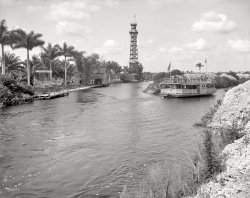
- Times Past: 1906
- ...
View From The Other Side I've been using the night scene of the Times building and this great shot shows it from the back looking towards where the night scene picture was taken.
Really Too Bad It is such a shame both ... Posted by Dave - 01/21/2019 - 1:30pm -
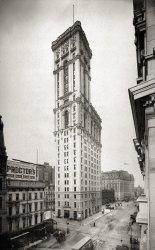
- Swing Street: 1948
- ... 52nd Street in New York. "The Street is at its best at night, when the neons start to bloom. It loses some of its carnival atmosphere ... Posted by Dave - 02/01/2019 - 1:08pm -
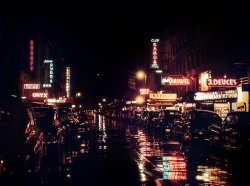
- Rear Brakeman: 1943
- ... flashing red light that you see on the end of a train at night; it comes on automatically when it gets dark outside.
Chicago and ... Posted by Dave - 08/02/2014 - 4:48pm -
![Rear Brakeman: 1943 March 1943. "Walter V. Dew, rear brakeman, on the Atchison, Topeka & Santa Fe between Chicago and Chillicothe, Illinois, watching the train from the cupola." Photo by Jack Delano for the Office of War Information. View full size.
Essential RR EquipmentCigar boxes.
Old time ingenuityClever use of cigar boxes. Today the brakeman would complain to management and the union. After six pages of paperwork, someone would be designated to hang a couple of metal boxes.
No maintenanceThe railroad didn't spend too much on frills (paint, shelving, etc,), did it?
"You lookin'at me?"Mr. Dew looks like he does not care to have his picture taken!
You never knowwhen half a shoelace will come in handy.
A quizzical smile on his face, as if to say you're down there and I'm up here, in charge.
My FatherWorked for the railroad in the 1930s. He's not with us now but just recently I found out that a pitchfork of his that I use to spread mulch is actually a coal fork, he probably acquired it while working the railroad. It has R&F stamped / burned into the handle. Looking at this picture I noticed those square nuts holding parts of the cabin the brakeman is sitting in together. I have tins of these my father had in his hardware stashes and had never seen them used before. They're the same, flat on one side and sort of curved on top. He worked outdoors on the mechanicals of the train. He used to say that a lot of the guys that worked the boiler shops were gone by the 1950's, they handled a lot of asbestos I guess. He used to think this was the reason.
No frillsDuring the war the maintenance was to keep the trains running and the materials flowing. Taking a caboose or any other needed equipment out of service for cosmetic work just wasn't done
About that cigar boxBack when my father-in-law passed on, I was given the enjoyable task of cleaning out his basement and I found a number of old cigar boxes from HIS father. Back in the late 1930s and 1940s, these were made from a lightweight wood, unlike the heavy cardboard of today, and from what I saw in that basement, they were for a number of aftermarket uses. This photo just shows another one.
Slowing down (probably)One of Walter's jobs was to keep an eye on that gauge, which shows the air pressure in the brake line. Normally (brakes off) it'd be at something like 80 or 90 pounds. When the engineer applies the brakes, the reading would go down; here it's 74 pounds, which probably means at least a little brake application.
If the gauge dropped really low really fast, it probably meant that a brake hose was open, either because the hose burst, or because the train had broken in two. If it dropped somewhat low and stayed there, Walter knew to hang on, because the engineer was stopping hard for some reason.
Today, this monitoring function is done by a box clamped to the coupler of the last car, called a Flashing Rear End Device or FRED. The brake hose on the last car is plugged into the box, and it transmits the current pressure by radio to a display in the cab. (Some engineers call the cab display box "Mary".) As the name implies, FRED also contains the flashing red light that you see on the end of a train at night; it comes on automatically when it gets dark outside.
Chicago and North Western LineIn the King Edward "Invincible" cigar box we may find the maps the brakerman used. The "Chicago and North Western" map we find on top, as we can see the "ball and bar" logo.
According to the Wikipedia entry on CNW, in 1943 the text must have been "Chicago & North Western Line" (1902-1944).
I suppose it was an "Employee Owned" map. here you may find one of 1977. I couldn't find one of around 1943.
Too Gone Too LongAs a rail fan, Walter is on my list of screen saver images and each time his gaze comes round I find Randy Travis looking back at me.
What is missing.As a kid in the 1950s I rode in several cabooses. There were girly pictures on the walls of the cabooses. None here in this pic. Perhaps removed for the portrait?
[There are plenty of girly pics in Jack Delano's other caboose shots. - Dave]
(The Gallery, Jack Delano, Railroads)](https://www.shorpy.com/files/images/SHORPY-8d26296a.thumbnail.jpg)
- Roy F. Carty: 1919
- ... I heard... ...that some places roll up the sidewalks at night, looks like they padlock them during they day, too. Mind your step.
... Posted by Dave - 08/05/2012 - 5:44pm -
![Roy F. Carty: 1919 Washington, D.C., circa 1919. "Roy F. Carty." Chief draftsman for the Shipping Board during the war, Roy went into business for himself in 1919 at 1407 14th Street N.W. National Photo Company Collection glass negative. View full size.
Philadelphia Storage Battery Co.Interesting technique on the battery sign. Painted letters backed up by an embossed metal surface to create a 3D perspective. Also interesting to see how "Philco" began as a trade name for a battery part, then turned into the company's name.
Still thereThe building appears to be still be there, but stripped of that nice bay window and doors.
[As noted above, Roy's store was on the other side of the street. But you can see some of these buildings reflected in the window. - Dave]
View Larger Map
The window ad"Step In For Your Electrical Troubles" is a paste up. The image of the lady was done for a "Hole-Pruf" stocking magazine ad by the famous illustrator J.C. Lyendecker. Looks like they cleverly combined ther top of the hoisery ad with the text about electrical problems
Sometimes it's what what NOT there...Where's the photographer's reflection? Even the buildings across the street are clearly seen.
[A wild hunch -- but maybe he's the guy in the hat standing next to the camera. - Dave]
Wrong Side of The StreetRe the Google Street View below. According to the DC Yellow Pages, the Hit Item store is 1406 14th St.
Auto Electrical Specialist
Washington Post, Aug 31, 1919
Along Realty Row
Throughout the war and the present days of the high cost of living, Roy F. Carty has drawn plans for many of the new ships added to Uncle Sam's merchant marine. Carty is the chief draftsman of the shipping board. Last week he tendered his resignation, to take effect September 8, when he will enter business for himself at a beautifully equipped office at 1407 Fourteenth street.
The lost tapesThe poster in the window appears to be affixed with scotch tape. Since it was not invented until 1930, it puts the photo date in question. Were there other types of cellophane tape in use in 1919?
[It's not "affixed" to anything. It's at least a foot back from the glass. The sign in the door is attached with adhesive or masking tape. Scotch Tape, a 3M brand, dates to the 1930s. - Dave]
I can spot emI can spot a Coles Phillips illustration from across the street.
I heard......that some places roll up the sidewalks at night, looks like they padlock them during they day, too. Mind your step.
Aerosol Paint Cans?The cardboard tubes at the bottom of the window; that's what they look like. I suspect they may be a container for a type of heavy duty fuse?
[Ignition coils. - Dave]
Compliments to the photographer.That's a really good photograph. The focus is razor-sharp throughout the entire depth of field, and he has even used the environment to solve his own "front-and-center" reflection problem. You can see the tripod legs reflected against the battery sign at the bottom of the window.
Whoever did this, knows his business.
How it might have looked in colorI know I didn't get a lot of the colors right, but it was a very difficult photo to colorize and I just finally stopped trying to get it absolutely right. Hope you enjoy it anyway.
[Hmm. No image attached. In any case, probably a better place to submit something like that would be the Member Gallery -- first, register as a user and then upload your photo there. If you go to all the trouble of colorizing something and then posting it here as a comment, it can't be any wider than this relatively tiny box. ALSO: If you do post images to Comments please follow the instructions and use the "Preview" button to make sure your photo is not bigger than the box. - Dave]
How it might have looked in color IIOne more try....
(The Gallery, Cars, Trucks, Buses, D.C., Natl Photo, Stores & Markets)](https://www.shorpy.com/files/images/28883u.thumbnail.jpg)
- Havana: 1904
- ... were lost.
A heavy gale struck the Cottingham Saturday night, and she sprang a leak. The power pump refused to work, and the vessel ... Posted by Dave - 09/08/2013 - 11:04am -
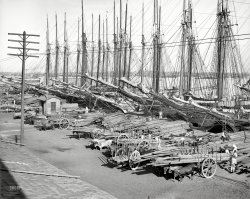
- Fill In the Blanks: 1931
- ... the unusual characteristic of sleeping, or folding up at night time. Much used in present day lotions and fragrances.
Re: ... Posted by Dave - 04/20/2013 - 9:03pm -
![Fill In the Blanks: 1931 UPDATE: The photo now has a caption.
Signs the president's name. Mrs. Leafie E. Dietz, recently appointed the "Secretary to Sign Land Patents," a position in the Government Land Office which, since its creation under President Arthur, has been held only by women. She signs "Herbert Hoover" to land patents and is the only person who has authority to sign the President's name.
Washington circa 1930. The document at hand in this unlabeled Harris & Ewing negative is a form ready for the signature of Herbert Hoover. Perhaps someone versed in bureaucratic history will recognize this lady. View full size.
CylindersCould they be for sending messages through a pneumatic tubing system?
The Mysterious CylindersThe Land Office probably trafficked in large documents -- maps and such. The cylinders might have to do with storing, transmitting or duplicating them. They look too long to be dictation cylinders or radio batteries.
Difficult JobCan you imagine how difficult it must have been for a woman in those days to be part of the White House staff? I love her glasses and her very direct, no nonsense look. There is a small star on her ring. I imagine someone will recognize its significance.
I bet those flowers wiltedThe moment she sat next to them.
Possible identificationI'm not sure, but I think that might be Ed Wynn.
A woman before her time?It looks like she was married and had a successful career, too!
Not an Ordinary Worker BeeWell dressed, with a fat engagement/wedding ring combo and what looks like an Order of the Eastern Star ring.
Job DescriptionThe document is a form of the General Land Office, predecessor to the Bureau of Land Management; the lady is authorized to sign the President's name as described in a caption accompanying a 1937 Harris & Ewing photo of another lady in what may be the same room:
Signs president's name. Washington, D.C., Sept. 8. Affixing the signature "Franklin D. Roosevelt" to land grants and patents, Jeanne [...], 20, is getting a great thrill out of her new [...]h the General Land Office. As "Secretary to the President [...]ning Land Grants and Patents," she is the only [...] authorized to sign the president's signature to documents. She is the youngest person ever appointed to the position. 9/8/37
Cylinders????What are the tall cylindrical objects against the wall? If we could identify them it might give us a clue as to what department she works in. The labels on them are far too out of focus to read.
Soil samplesSince this is a land management office, the tubes might well be soil sample cores. Contemporary tubes are a similar size and shape.
[The Land Office didn't have anything to do with dirt. - Dave]
Pot MarigoldThe flowers appear to be the common calendula officianalis, or the more common name of pot marigold. A popular cut flower back in the day, it has the unusual characteristic of sleeping, or folding up at night time. Much used in present day lotions and fragrances.
Re: Cylinders?My first thought, as well, but aren't they awfully long canisters? The required bend radius in the pneumatic lines would be huge!
Her name is Leafie E. DietzAfter a fun little search these past couple of hours, I've discovered her identity. It is Leafie E. Dietz, designated by President Hoover in 1931 to sign land patents, by Executive Order 5529.
This photograph shows the preparation of a land patent granted to Janie Furr, for 640 acres of land in two sections (8 and 17) in Grant County, New Mexico, dated Jan. 21, 1931.
The most exciting part was the hunt! I work in land administration, so I immediately recognized the document as a patent or similar document.
I rotated the image and messed with the contrast to try and read the document. I immediately recognized a chunk of the writing as a legal description. At first, I couldn't make out much, but after recognizing the words "New Mexico Meridian" (23rd Meridian) and "six hundred forty acres", I was able to discern the township and range: T16S R15W (or "Township sixteen south of Range fifteen west" as it is written on the patent). From there, I did a simple search of the BLM's land documents using the legal description, which pulled the original patent (fully filled out by that point!) image with matching description! (attached below, original accession # 1043289).
Stupidly, I did not look down at the signature block, and attempted to locate the identity of this woman through a search of the congressional registry for 1931. After searching the GLO's employees, as well as the executive office's employees (thanks to the hint from Dave's comment), I was not able to find anything further...until...
I took another look at the patent, and voila! How blind could I be?! There, under "Herbert Hoover"'s signature, is the notation "By Leafie E. Dietz, Secretary." It's her!
A quick Google search turns up the executive order by Pres. Hoover designating her to sign land patents, and also some results regarding her involvement with the Order of the Eastern Star (in Colorado, apparently), as hinted by her ring.
A search on Ancestry.com returns census records, indicating she was born in Iowa about 1878 (making her about 53 in this photo), and the 1920 and 1930 censuses show she lived in Washington, D.C. The 1920 census lists Joseph, Dorothy and John as children (22, 16 and 14 respectively). Interestingly, it also shows George working as a law clerk in the Land Office, but Leafie with no occupation. She must have started the position after the children were grown, perhaps hearing of the opening through her husband. Joseph is listed as a stenographer.
Also see the image below of a snippet from the New York Sun, (Jan. 13, 1931, only days before the Shorpy photo above!) highlighting her new post.
A fun way to pass a couple of hours! I love research/genealogy (and land records!). I'm glad I found this site!!
Wow!Wow, jordannelson, that's an amazing piece of sleuthing. Good thing Mrs. Dietz has long departed this vale of tears, or Mr. Dietz might accuse you of stalking his wife.
Petworth Lady
Washington Post, May 25, 1954.
Mrs. Dietz Dies; Worked at Interior
Mrs. Leafie E. Dietz, 78, who put the signatures of two presidents to homestead land grants as part of her job at the Interior Department, died yesterday at the Washington Sanitarium. She lived at 8424 Queen Anne's dr., Silver Spring.
After her husband, George C. Dietz, an Interior Department lawyer, died in 1929, Mrs. Dietz was appointed a clerk in the General Land Office of the Interior Department. There she was legally empowered to sign land patents for homesteaders with Presidential signatures. She served under Herbert Hoover and Franklin D. Roosevelt.
Mrs. Dietz, who retired in 1944, moved to Washington in 1918. She was a native of Keokuk, Iowa, and was married in Silver Cliff, Colo., in 1895 during a silver rush there.
Active in the the Order of the Eastern Star, she helped found the Joppa Lodge Chapter in Petworth. She was a member of the Petworth Women's Club and the Petworth Methodist church.
Surviving are two sons, John E. Dietz of 9143 Sligo Creek parkway, Silver Spring, and Joseph M. Dietz, of Harrisonburg, Va.; one daughter, Mrs. Dorothy Trautman, of 8424 Queen Anne's dr., Silver Spring; three grandchildren and four great-grandchildren. …
(The Gallery, D.C., Harris + Ewing, The Office)](https://www.shorpy.com/files/images/SHORPY_36187a.thumbnail.jpg)
- The Automobilists: 1906
- ...
Note the searchlight on the hood. Came in handy at night for targeting all those wild and woolly critters out there.
Site of ... Posted by Dave - 08/20/2012 - 2:06pm -
![The Automobilists: 1906 June 1906. "REO Mountaineer -- New York to San Francisco and back." Percy Megargel and David Fassett at the conclusion of their 10-month round trip. 8x10 inch dry plate glass negative, Detroit Publishing Company. View full size.
Just In TimeIf that is oil under the vehicle, fortune rode and finished with them. And I do like the holstered rifle accent.
ArmedTry riding into NY with a rifle hanging on your car now.
StemsInteresting to note that not only is the vehicle a right hand drive but each wheel has five valve stems.
[Those are tire clamps -- retainers that hold the tire on the wheel. - Dave]
Chain driveThe Reo, like a lot of early automobiles, used chain drive (a heavier-duty version of what you'd find on a bicycle) to turn the rear wheels. The canvas slung under the car would have kept the chain from getting tangled up with underbrush. The chains were lubricated with grease, which would explain the oil spots.
Talk about road rage.The rifle seems to be an accessory that has gone by the wayside. Pity.
One Grueling GrindBoth men look worse for wear after their months-long adventure. This New York Times article from 1908 details the East-to-West half of their grueling trip, their detour (turn left at the Sierra Nevada range), and a list of things they'd do differently next time. That included taking TWO Winchester rifles to ward off wolves, a vehicle with much higher clearance and a lot more food (they went without eating for four days at one point).
Note the searchlight on the hood. Came in handy at night for targeting all those wild and woolly critters out there.
Site of Yankee StadiumThe numbered street sign is illegible, but the other one seems to say Jerome Ave. If so, the combination of that and Huber's Hotel seems to mean that the photo was taken in the Bronx at the site of the future Yankee Stadium.
[Huber's Hotel was at Jerome Avenue and 162nd Street. - Dave]
Whaddaya mean, we need an E-Z-Pass?Once again Percy and David are rebuffed by the Holland Tunnel. And the Oyster Bar was close, so very, very close.
I Call Shotgun!What else can be said. In this case, literally.
Hoarse and Buggyis what they were after traveling 11,000 miles sans windshield.
The Clampettsmust have bought this one used!
If that is a sanitation worker in the left background, he's probably excited that the car produces zero emissions of a different kind!
(The Gallery, Cars, Trucks, Buses, DPC, NYC)](https://www.shorpy.com/files/images/4a21366a.thumbnail.jpg)
- We Deliver Free-Freely: 1920
- ... circa 1920. "People's Drug Store, H and 8th Street N.E., night." National Photo Company Collection glass negative. View full size. ... My impression is that this store looked better at night than in the daylight.
A People's Person So many fond memories ... Posted by Dave - 08/05/2012 - 10:57am -
![We Deliver Free-Freely: 1920 Washington circa 1920. "People's Drug Store, H and 8th Street N.E., night." National Photo Company Collection glass negative. View full size.
We always sell the best...... Mothproofing bags and a whole lot of cigars.
The dentist next door is being squeezed out of business.
Lil' Shop O' HorrorsSo, will it be a sampling of some "Rubber Goods" for later? Or a visit to the scary second-floor dentist?
Hmmm. I'll pass.
Check Please!Looking through the door, there is a sign behind the flag that says something about "Checks" and below it, what appears to be the word "Here." There is a word before "checks" -- normally, I'd fill it in with "Order checks here" but it doesn't look like the ending for "Order." Also, people didn't really use checks at this point, did they?
[The sign says "Soda Checks Here." A prepaid book of coupons. - Dave]
Seen Better DaysThanks to the columns on the PNC bank to the left, we can identify this old building, still standing near the corner of 8th and H.
View Larger Map
StorefrontMy impression is that this store looked better at night than in the daylight.
A People's PersonSo many fond memories of People's Drug Stores. Part of my very young years (about 35 years after the photo) were spent in Washington, D.C. Going to the local People's was a treat. My grandfather would take me there for a Coke. My first wristwatch (Snow White -- and I still have the little porcelain figurine that came with it) was bought at People's.
The People's ChoicePan around the Google street view, and you'll see why People's No. 5 is no longer in business; there's a huge Rite-Aid Drug Store right across the street!
[But how are they when it comes to trusses and Rubber Goods? - Dave]
(The Gallery, D.C., Natl Photo, PDS, Stores & Markets)](https://www.shorpy.com/files/images/28983u.thumbnail.jpg)
- Channel Surfing: 1956
- ... in the Bronx. I remember going to their apartment the night the set was installed, and as we all sat in front of the TV waiting for ... Posted by Angus J - 11/28/2011 - 3:02pm -
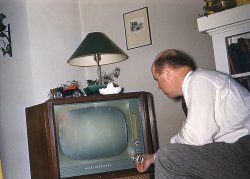
- On His Rocker: 1952
- ... by aliens? I've tried in the past (and tried again last night) to find Tuttle burials on Find-A-Grave, but have never had any luck ... Posted by Dave - 03/16/2016 - 3:47pm -
![On His Rocker: 1952 "Abe at home -- Jan. 20, 1952." The Tuttle patriarch amid a hothouse of floral motifs in Blue Earth, Minn. 35mm Kodachrome by Hubert Tuttle. View full size.
You could buy the radio but it won't be the sameI bought an old floor radio of that type (in better condition cosmetically) just a few years back. Alas, the good old days of Lum and Abner, The Shadow, and Jack Benny didn't come with it. I'm of the TV age (barely) but as a kid spent time out of state summers in a remote area where the radio stations broadcast the old programs all day on a schedule. With no TV there out in the wilds, I learned to appreciate what my parents had loved about radio growing up.
I wish there were some fine programming for that fine old radio now. Still, I listen to the baseball games on it. That's pretty much the same as ever and makes me happy for a few hours now and again.
Abe's view of the world and so many historic events of his long age were doubtless fired by the glow of those vacuum tubes.
Philco 46-1226The exact radio that graced our living room in 1949.
Old-time radioAbe Tuttle knew how to live. I was a week old when he was photographed here.
Old-time radio, either downloaded onto CDs or via Greg Bell's XM Radio Classics, has made my DC-Beltway commutes enjoyable for many years. My millennial friends have no idea of radio as a source of that kind of entertainment, and a few have scoffed that it was something for geezers. I keep this old Suspense episode-- there were several versions of this tale over the years, and the one starring Jack Webb is missing some audio in the transcription-- and once they hear it, they scoff no more:
https://www.youtube.com/watch?v=sARjY1Gihfk
The episode is called "A Shipment of Mute Fate."
Console radioI did buy one of those radios - a Philco 46-1226, to be exact. It cost $80 and it doesn't work, but it's in pristine condition. I've got about 1,300 old time radio shows in my iTunes library and a Bluetooth speaker positioned behind the fabric grille completes the illusion nicely.
Moments laterAbe rocks back in his chair, causing the tassel to come in contact with the back of his neck. Thinking it's a spider, Abe slaps it hard, grasping the doily while suddenly lurching forward in the chair, pulling the potted plant off its stand which shatters the glass on the wedding photo and dumps wet dirt onto the floor, but not before knocking over the floor lamp, which in turn destroys the ceramic pig and chips the top of the radio.
[Actually those tassels belong a butterfly. - Dave]
Abducted by aliens?I've tried in the past (and tried again last night) to find Tuttle burials on Find-A-Grave, but have never had any luck finding Grace, Herbert, Abe, or Julia. Has anyone else found graves or obituaries? It's like they disappeared. Could they be in a private family cemetery?
[Much biographical info in the comments under our previous Tuttle photos. For example. - Dave]
Abe can keep the florals... but I want that radio!
Notice the wedding portraitjust behind the plant stand. Julia hasn't changed a bit.
[In the dozen or so photos I have of her, Julia's countenance is possessed of an almost geologic immutability. - Dave]
Floral overloadI finally understand the appeal of the deer camp and ice fishing shanty.
I Can Hear It NowFibber McGee & Molly, Edgar Bergen & Charlie McCarthy, Jack Benny & The Great Gildersleeve ...
GAWD I miss the old days!!!
I'm getting kind of fond of this Tuttle familyAt first not so much, but these are memories from the time I graduated from High school. Thanks!
You've got to trim those fingernails!Typical worn-through finish around the most-used knobs on the radio. In this case, it's a low-end five-tube 1935 RCA console, Model 214.
http://www.radiomuseum.org/r/rca_214.html
Hello DoilyOne thing that aggravated us kids when visiting Granny -- DOILIES!! They were always getting squished up on tables, wet under plants, and the worst was sticking to a sweaty youngster's arms off a chair. After looking at eBay and ads for places like Michael's, they are apparently still used.
That horse.I have that exact same cast metal horse that has been with me more years than I remember. I've never found where it came from and this is the first sighting of another. Anyone else have one?
Mine is just as shiny too.
Old time radioIf anyone has an old tube radio that they'd like to enjoy, here are a couple of tips. First and foremost, if you acquire an old tube radio, DON'T PLUG IT IN! Old radios have components that can catch fire when power is turned on. Have a PROFESSIONAL give it a once over. You'll need the capacitors replaced with modern ones at the very least.
Now if you want to listen to it (once it's restored) there are things you can do. Some restorers will add a little RCA plug to the back, so you can plug any modern signal source into it.
Or you can get a low power AM transmitter. You can get ones with only a few mili-watts of power, and are FCC legal, that have a range of less than a quarter of a mile. The one I use is the SSTRans AMT3000, available on line. (And I'm definitely not getting a percentage of the profits on it. ;-) ) They're generally considered the best one available.
Then you can put any source, i.e. CD or Internet, through the device and send the signal to any AM radio within range tuned to the correct frequency.
I own a beautiful 15 tube 1938 Philco 38-116 console, that I can listen to the many available oldies internet streams on. Even old radio shows, such as Fred Allen, the Phantom, etc., are available. MUCH fun.
(Minnesota Kodachromes)](https://www.shorpy.com/files/images/SHORPY-MNK006.thumbnail.jpg)
- Multipurpose Room: 1940
- ... 1940. "New England housewife fixing supper on a winter night. Woodstock, Vermont." Photo by Marion Post Wolcott for the Farm Security ... Posted by Dave - 05/21/2019 - 7:32pm -
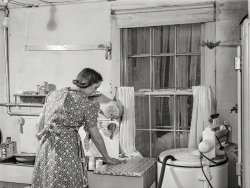
- Car Noir: 1977
- A very quiet night, after midnight in Medford, Massachusetts. Not sure of the make or year ... Posted by rizzman1953 - 06/23/2012 - 5:45pm -
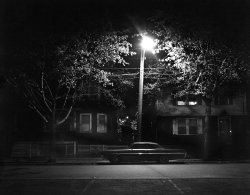
- Honest Household: 1912
- ... can do only 1,000 a day. They work nights a good deal. The night before, Helen and James worked until 11 p.m." Photo by Lewis Wickes Hine. ... Posted by Dave - 08/13/2016 - 12:09pm -
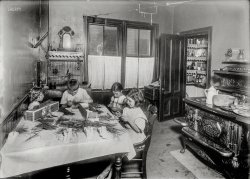
- In the Pines: 1905
- ... girl, don't lie to me
Tell me where did you sleep last night?
In the pines, in the pines
Where the sun don't ever shine
I would shiver the whole night through
My girl, my girl, where will you go
I'm going where the ... Posted by Dave - 07/29/2012 - 1:31pm -
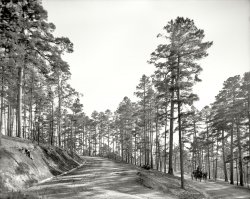
- Hazard Bridge: 1940
- ... water from a well, there were turtles on the road, and at night fireflies and lightning storms. I slept on the porch. To this day it is ... Posted by Dave - 09/05/2012 - 7:09pm -
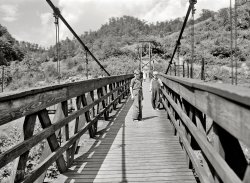
- Time to Fly: 1943
- ... we should feel now.
A Fitting Tribute On this first night of Passover.
re: The Lieutenant's Can It is a butt can, an ... Posted by Dave - 04/18/2011 - 9:51am -
![Time to Fly: 1943 1943. "South America. U.S. Army Air Transport Command pilot being awakened to receive orders." No rest for the weary, including Lt. Sidney Tannenbaum. 4x5 acetate negative by David Eisendrath, Office of War Information. View full size.
Sweet dreams"Hey, why'd ya hafta wake me up? I was just about to kiss Betty Grable!"
Survived the war, he did.Died June 20, 2002, 81 years old. Buried in the National Memorial Cemetery of Arizona in Phoenix.
The Lieutenant's CanAny informed guesses as to what that can is for? My uninformed guesses include spittoon, ashtray, fire-dousing sand, chamberpot.
Lt. Fir Tree Methinks he doth play possum! His face looks like he is wide awake, and trying to look cute. He's not doing too bad a job of it, either!
And then, I'll get the other pup.The one that gets the bugler up.
Thanks RDown3657For the information on Lt. Tannenbaum. I know right where that cemetery is on Cave Creek Road in Phoenix.
The Lieutenant must have flown a lot during the war as his hat indicates a strong "50 mission crush."
God bless him and all the other guys who fought in WWII for us.
[Not sure how much fighting a pilot in South America would have done. - Dave]
Brotherly LoveWe owe so much to the folks who served to protect our freedom that it is almost impossible to put into words of how we should feel now.
A Fitting TributeOn this first night of Passover.
re: The Lieutenant's CanIt is a butt can, an ash tray of sorts. It was about half full of water and you used it to douse cigarettes in. Sometimes sand was used, most of the time it was water. Crude, but effective for a raw wood barracks. This was still in use in the 50's.
Butt CanUnder the bunk.
Maybe no fighting but a lot of flyingThe Air Transport Command was the supply line during the war. Replacement combat aircraft and supplies were flown south to bases in South America, then across the Atlantic to Africa and from there to the Far East. U.S. airlines, Eastern, American, Pan Am, etc., also provided transport aircraft, crews and base personnel. My father was with Eastern Airlines at Natal and Belem, Brazil.
(The Gallery, Aviation, WW2)](https://www.shorpy.com/files/images/8e01427u.thumbnail.jpg)
- Heading South: 1929
- ... p.m. landed in Charleston, S.C., where they will spend the night as guests of Rear Admiral Newton A. McCully, commandant of the Charleston ... Posted by Dave - 12/14/2018 - 2:24pm -
![Heading South: 1929 September 18, 1929. "Mr. & Mrs. Lindbergh." Aviator Charles Lindbergh and Anne Morrow Lindbergh, four months after they married, at Bolling Field en route to South America. Charles, the pioneering aviator, was probably the most famous person in America at the time; Anne would become an accomplished aviator in her own right, as well as one of the best-selling writers of the 20th century. Some three years after this picture was taken, the tragedy of their child's murder helped define the modern phenomenon of mass-media super-celebrity. From Anne's 2001 obituary in the New York Times: "Nothing, not even Lindbergh's 1927 landing in Paris, had prepared them for the carnival of reporters, photographers, con artists, curiosity-seekers, vandals and crazy people who invaded their lives after their baby was kidnapped. Americans would not experience a similar flood of publicity until the O. J. Simpson murder trial of the 1990s." National Photo Company Collection glass negative. View full size.
Not togetherThey look a rather disjointed couple, facing in different directions and no sense of mutual feeling for each other.
Re Aircraft ModelIt is indeed a Vega 5, a very capable aircraft that was flown on the first trans-Arctic flight and the first exploratory flight over Antarctica (Hubert Wilkins and Carl Ben Eielson in the Vega 1 X3903); the first solo transatlantic flight by a woman from Newfoundland to Ireland (Amelia Earhart in the Vega 5B NC7952); and the first solo round-the-world flight (Wiley Post in the Vega 5B The Winnie Mae). Most Vega photos show the engine cowling eventually added for streamlining and better cooling of the super reliable Pratt & Whitney Wasp R-1340 engine, as well as full aerodynamic covers for the wheels.
My info is that the Lindberghs' September 1929 trip began in a Ford Tri-Motor with Juan Trippe (founder of Pan American Airlines) and his wife. Maybe Lindy and Mrs. Lindy were chillaxin' waiting for the Trippes to arrive and someone posed them with the Vega. The Lockheed PR guy, maybe.
A rather largeaircraft for a single engine monoplane and Lindy was no short person.
Aircraft ModelI believe it's the first model of the Lockheed Vega.
Maybe the TrippesStanding on the Starboard side waiting for the photo-op to end.
Charles Lindbergh was 6' 3" tallAnne was much shorter. But she made up for it by living 22 years more than he did.
Trippe LegsMaybe those legs and feet on the other side of the fuselage belong to Mr and Mrs Trippe.
As dry as the ground looks there sure seems to be an inordinant amount of mud on the tires especially since there is a paved surface visible in the background. Though I can't tell if that is a road or a taxiway as it appears too narrow to be a runway.
2001???The Mrs. was with us until 2001? That would make her at LEAST 90 at death. Wow. Not bad for someone from that era.
[According to census figures, Anne Lindbergh was one of over 370,000 women aged 94 or older in the US in the year 2000.]
[Anyone in their 90s is "from that era." - Dave]
Re Aircraft Model
Washington Post, September 19, 1929.
Lindberghs Begin Pioneer Air Trip.
Stop Off in Capital.
The most famous flying couple in the world left Roosevelt Field this morning to chart air lanes between North and South America, and at 4:30 p.m. landed in Charleston, S.C., where they will spend the night as guests of Rear Admiral Newton A. McCully, commandant of the Charleston Navy Yard.
Charles Augustus and Anne Morrow Lindbergh took off at 8:55 just as Col. Lindbergh had skimmed down the same runway two years ago to make the first nonstop air crossing from New York to Paris.
The couple arrived by motor car shortly before 8 o'clock, ready for their long air cruise, but their plane, a Lockheed-Vega cabin monoplane, which had been borrowed from Morgan Belmont for the trip, did not reach the field until 8:15, owing to fog.
The colonel explained that he was making the flight to inaugurate the extension of air mail and passenger service of the Pan-American Airways from San Juan, Porto Rico, to Paramaribo, Dutch Quiana, which will take him to sixteen South and Central American countries. It officially begins at Miami Friday morning at 8:30 and will last about three weeks.
The plane in which they flew off from Roosevelt Field carried 180 gallons of gasoline, which will take it about 1,000 miles at an average cruising speed of 125 miles an hour. At Miami they will change for to a larger trimotored Fokker plane, which will carry them to San Juan, where they will make another change to a large Sikorsky.
During his stop at the Capital yesterday Col. Lindbergh conferred with Assistant Secretary White of the State Department, in charge of Latin-American affairs, and with Commerce Department officials. Mrs. Lindbergh went on a brief shopping tour. She was accompanied by Mrs. H.C. Davidson, wife of the Bolling Field commandant.
(The Gallery, Aviation, D.C., Natl Photo, Public Figures)](https://www.shorpy.com/files/images/SHORPY_17645u.thumbnail.jpg)























